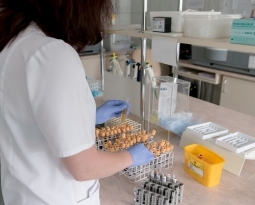U.S. Army investing in R&D to create robots and other advanced technologies
The U.S. Army has spent the last 10 years working with researchers and universities across the country in a collaborative technology alliance to help solve major military issues. In 2008, a research an R&D program was launched and called Micro Autonomous Systems and Technology (or “MAST”). It was a program designed to research and develop technologies to improve tactical situational awareness and enhance safety for soldiers of the future.
The U.S. Army Research Laboratory, whose research team consisted of 19 partners, including the University of Michigan and MIT, recently displayed their findings at a Collaborative Technology Alliance capstone event. New technologies developed through MAST were demonstrated live by 17 teams of researchers and included robots for both the ground and air, and self-organizing autonomous quadcopters.
Now that MAST has concluded, the Army has announced it will soon launch a new technology alliance research program called Distributed Collaborative Intelligent Systems and Technology (or “DCIST”). This time around, the program will research and develop technologies that can enable many systems, heterogenous in nature, to distribute intelligence and communicate. Researchers want to make it possible for information to transmit instantly to all different units. This can include soldiers, robots and Humvees, in the air or on the ground. Though there are challenges sure to be faced, researchers are calling it “an incredibly difficult, exciting program” and that it will play a major role in strategy for the Army.
The technology industry is growing at an aggressive rate and like the Army, many are investing millions in R&D to stay ahead of the technology curve. An R&D Tax Credit can support businesses in any industry in further developing their research. If you would like to find out more about R&D tax and whether your company may qualify for an R&D Tax Credit, contact a Swanson Reed R&D specialist today.

















